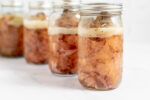Pressure Canning Pork
Ingredients
Scale
- Pork, 2 lbs per quart jar
- Salt, 1 teaspoon per quart, or 1/2 teaspoon per pint
- 1/2 teaspoon ground black pepper per quart (optional)
- Spices such as oregano, paprika, onion powder, etc. (optional)
Equipment needed:
- Pressure canner (I like this one)
- Canning jars
- Canning lids and rings (I like Denali brand, as they guarantee a seal and I have yet to have one fail)
Instructions
- First, you’ll want to prepare your canner by filling it with cool water according to your individual pressure canner’s instructions. You’ll also want to sterilize your jars and lids.
- Once you’ve done that, trim your pork of most excess fat and gristle, and cut it into 1-1 1/2 inch chunks.
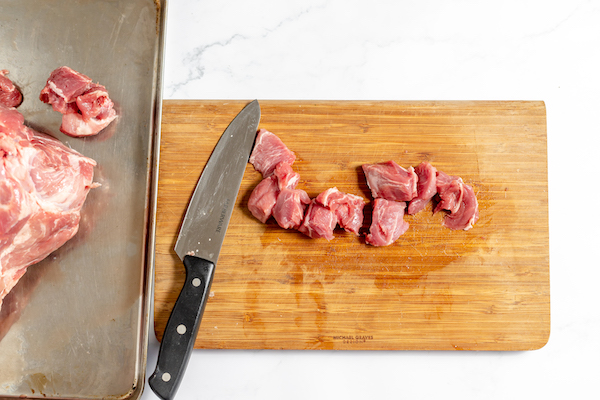
- Pack the cubes into the jars, leaving about 3/4 inch headspace. Quart jars hold roughly 2 lbs of meat, and pint jars, 1 lb.
- Top quarts with 1 tsp of salt, and pints with half a teaspoon (alternatively, you can mix meat with salt before packing jars for more even distribution. 1 teaspoon per 2 lbs of meat).
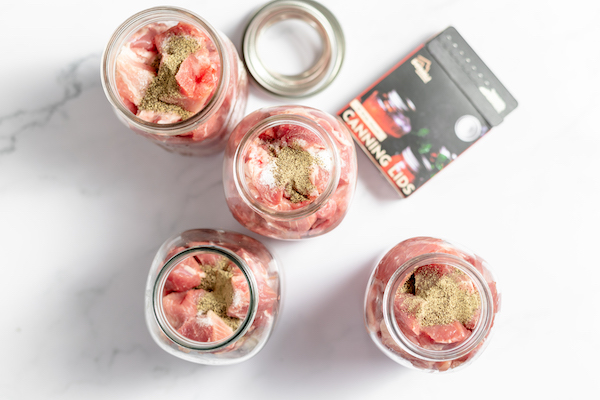
- Make sure rim of the jar is free of debris, wiping with a clean, damp cloth if necessary.
- Top with list and rings, screwing down firmly.
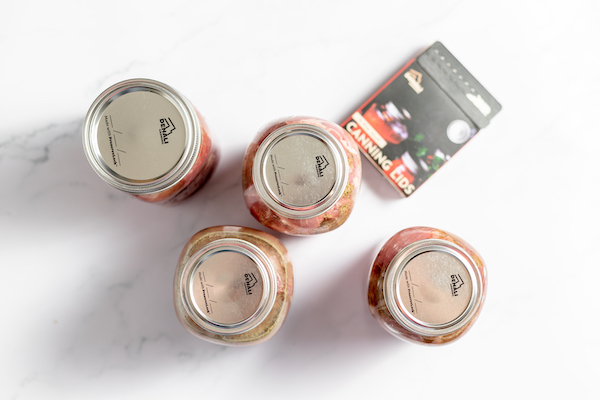
- Arrange in prepared pressure canner, and close canner lid.
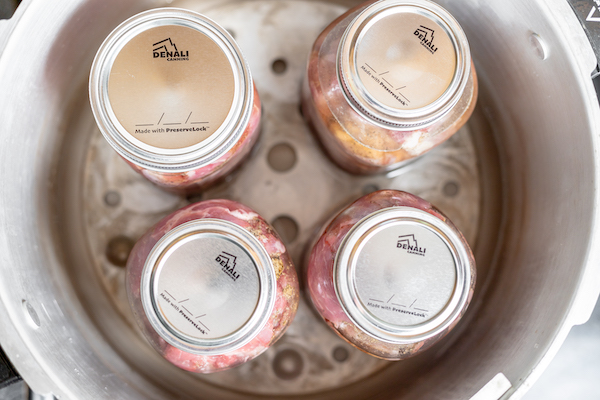
- Heat until a steady stream of steam starts to vent from the open pressure valve.
- Set timer for ten minutes.
- When timer goes off, Close pressure valve and bring to ten pounds of pressure (or 15 pounds if over 1,500 feet elevation), and process for 90 minutes for quarts, or 75 minutes for pints according to the South Dakota Ag Extension.
- Remove from heat and let canner depressurize. I know a lot of people remove the weighted gauge from the pressure valve to speed this process up, but I do not recommend that as it can result in cracked jars.
- After pressure has returned to zero, open valve.
At this point, you may remove lid and carefully remove jars, avoiding drafts, and set them in a safe, draft-free place. I will usually line the counter-top with a towel, and then place a towel over the jars to further insulate them. Anything to keep a jar from breaking!
If you can though, it’s really a lot safer and easier to just let the canner cool completely before opening the lid.
Find it online: https://www.frugalfarmwife.com/article/canning-pork/
